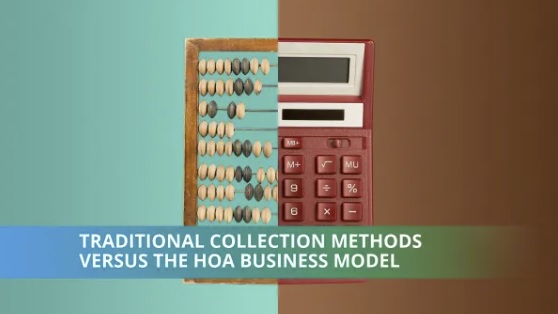Traditional Collection Methods Versus the HOA Business Model
Traditional Collection Methods Versus the HOA Business Model
The Collections Conundrum
Human interaction is the foundation of a good business, that’s a pretty standard assessment. But that interaction gets complicated in a business like a community association. It can be a very muddy concept–homeowners buy a house that comes with a way to try to guarantee property values for a marginal fee, but it isn’t always clear that this agreement makes them part of a larger business model. This complicated relationship can make difficult business practices, like debt collection, all the more painful.
Fabio Ades, owner of PMI Top Florida Properties, who manages Serenity Place IV Condominium, found Axela’s post-foreclosure process to be the key to uncomplicating this unique business relationship, and softening the blow of debt collection.
“Implementing Axela was seamless for my management team because it connected with our existing accounting system. The way Axela’s systems are set up just made things easier for us,” says Ades. “But more importantly, Axela helps our customers. Consistent collections keep up the health of the community and protect members’ assets.”
Traditional Collections in an Untraditional Business Model
Collections are traditionally a process regarded as heartless. It calls to mind thoughts of unending phone calls from aggressive debt collectors armed with threats of asset repossession and loss of livelihood. It creates a general feeling of uneasiness in just about everyone. Unlike other business collections processes, that lack of ease is typically felt on both sides of the table when it comes to collections in a community association.
“It’s hard for people to remember that it’s not Fabio calling to collect–it’s not the Community Association Manager. It’s not the Board Treasurer who’s the bad guy, we’re not the bad guys,” Ades said.
Unfortunately, that’s what homeowners see. They see the person they’ve made friends with, they see their neighbor, the grill master who lives two doors down, or the dog walker on the third floor. They’re being asked by friendly faces for money they’re struggling to make, and those friends and neighbors are just as unhappy to be doing the asking.
But that’s the job. And that job is made a lot harder with the knowledge that there isn’t a lot of wiggle room when it comes to acting on delinquency.
“Management companies frequently have regulations that make it hard to help homeowners,” Ades lamented.
Community associations have little to no flexibility when it comes time to collect on past due payments from a homeowner. This is often a four-step process:
- Send an initial courtesy letter to the owner about the unpaid fees, alerting the homeowner of penalty fines if they remain unpaid
- Send a second courtesy letter, again warning of penalty fines for unpaid fees
- Send a final courtesy letter requesting payment and warning of pending legal action
- Refer the case to an attorney to begin pursuing legal action, at cost to the association
When a lawyer is on a collections case and the bank forecloses, it’s game over. If the property is in a super lien state then the association will recover a pittance of what is owed and the attorney will advise the association to “write off” the balance. Also, the attorney will advise the association that they owe him/her for legal services.
All of this happens over the course of 60 to 90 days. For a homeowner struggling to make payments, that time flies by and often isn’t enough to get current on the account.
Discover more from SFPMA
Subscribe to get the latest posts sent to your email.


